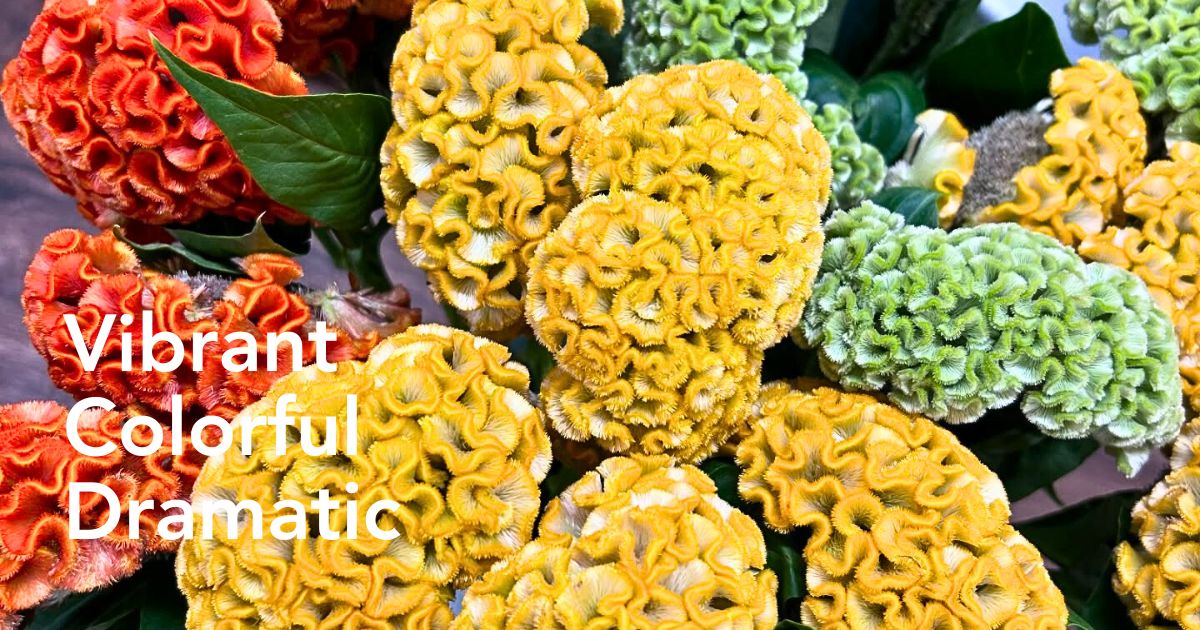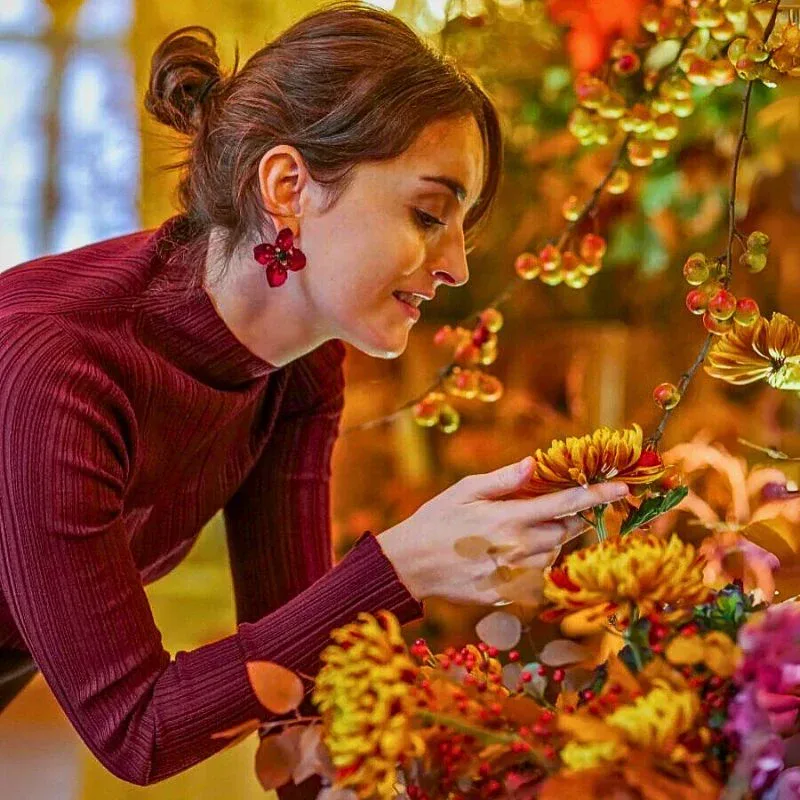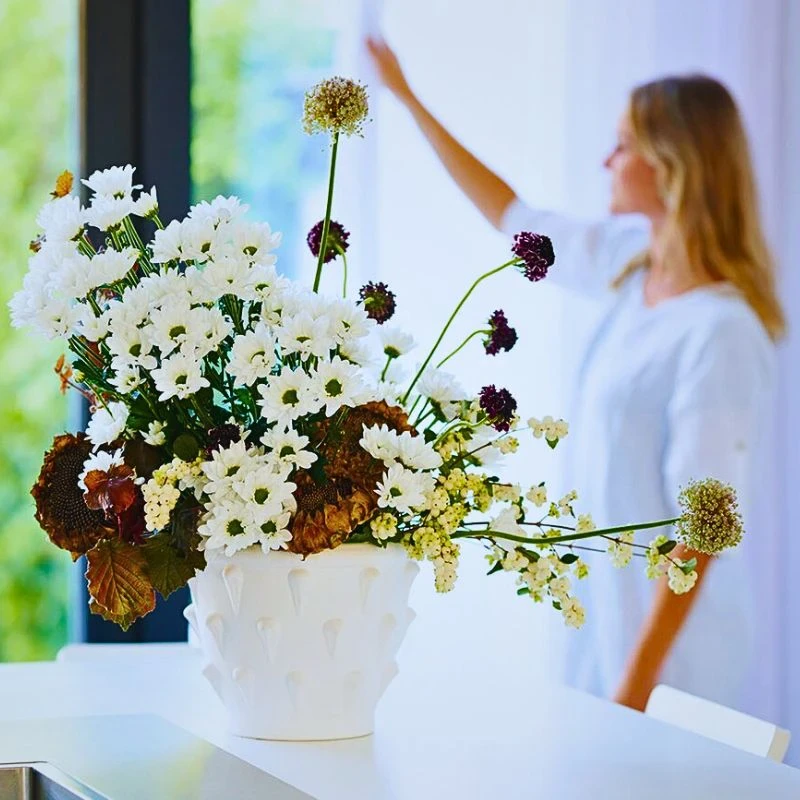Few flowers make a statement in the garden quite like the Celosia flower. With its flame-like plumes, coral-like crests, or soft, wheat-shaped spires, Celosia is not just a plant — it’s a standout. This unique member of the Amaranth family is known for its bold textures, intense colors, and versatility in outdoor spaces and floral design. Grown for centuries across Southeast Asia and now cultivated worldwide, the Celosia plant continues to attract the attention of growers, designers, and flower enthusiasts alike.
Whether planted in a sunny garden bed, arranged in a patio container, or featured in a striking cut flower display, Celosia is easy to care for and rich in visual appeal. This guide explores how to grow Celosia successfully, the types you’ll find in gardens and markets, and its growing importance in the global floriculture scene, from breeders and growers to designers who rely on its character and long-lasting quality.
Types of Celosia Flowers – Flame, Coral, and Wheat
Celosia is known for its expressive flower heads that take on three distinctive forms. Each type brings a different shape, texture, and height to the garden or floral arrangement — from upright flames to sculptural waves and slender, spiky stems. Understanding the differences between these types can help gardeners and florists select the right variety for their space, season, or design intention.
Plumed Celosia
Often referred to as Celosia plumosa, plumed Celosia produces upright, flame-shaped flower heads that resemble flickering fire. These soft, feathery flowers sit atop sturdy stems, making them an ideal choice for both garden beds and tall containers. The flowers come in vivid shades of red, yellow, orange, magenta, and pink, offering strong visual contrast throughout the growing season.
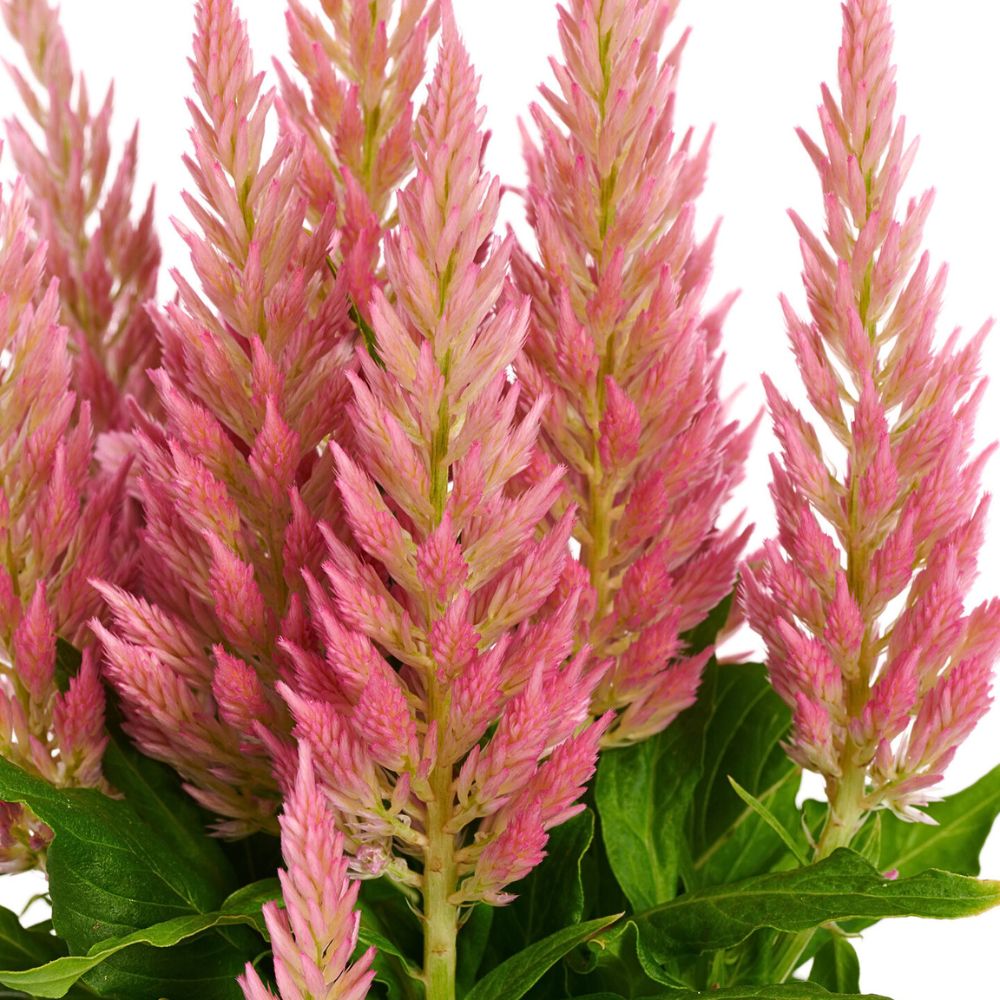
Plumed Celosia varieties grow between 30-90 cm (12 to 36 inches) tall, depending on the cultivar. They thrive in full sun, warm temperatures, and well-drained soil, and their upright habit makes them a favorite for cut flower displays. Their feathery structure adds vertical interest to bouquets and garden borders alike. For growers, these types are especially appealing due to their consistent shape and flower production across the season.
Cockscomb Celosia
Celosia cristata, commonly known as cockscomb Celosia, is the most sculptural and textural of the three types. The flowers develop into broad, wavy crests that resemble brain coral or rooster combs, hence the name. These large flower heads can grow to impressive sizes and often have a velvety appearance, making them a striking focal point in any garden or arrangement.
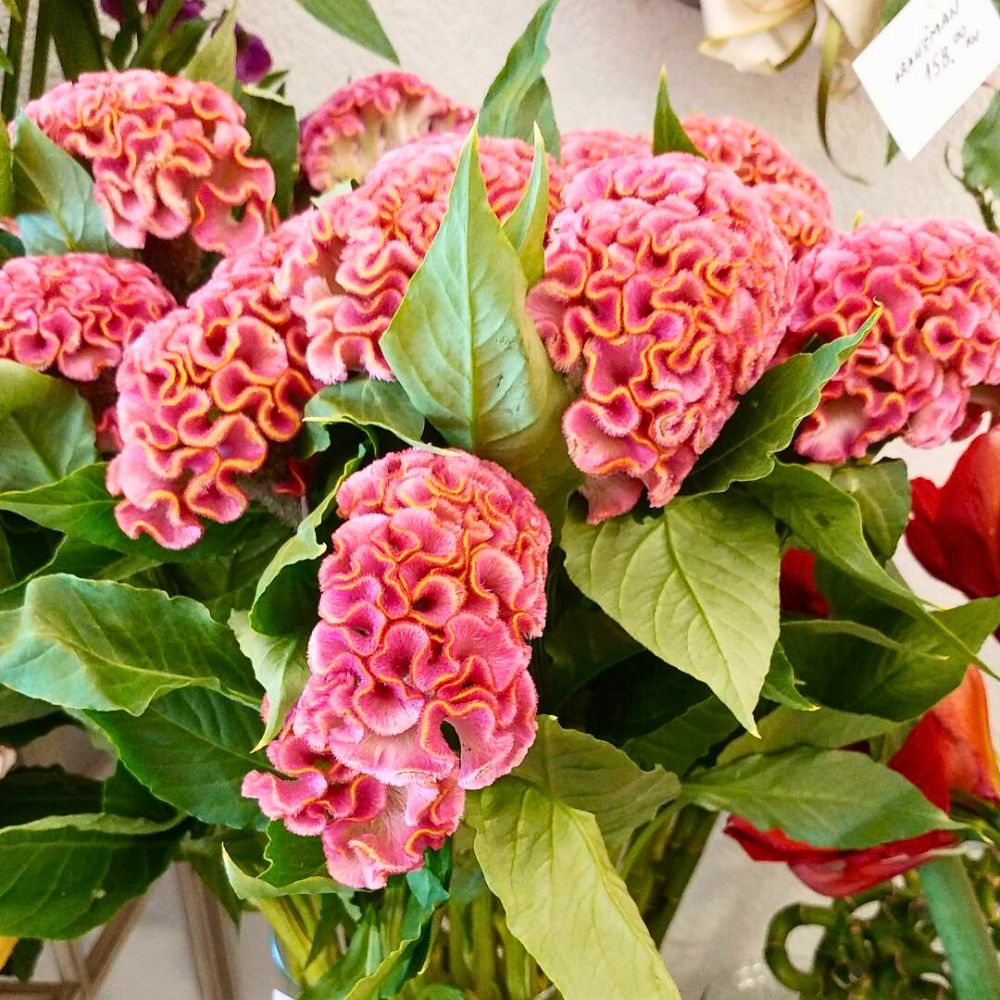
Cockscomb Celosia is frequently seen in deep reds and purples, though newer cultivars have expanded into golds and pinks. The flowers form along a central stem, and because they can become top-heavy, taller varieties often benefit from staking, especially when grown in garden beds. Their dramatic form and color saturation make them a top choice for florists looking to create statement pieces.
Wheat Celosia
Celosia spicata, or wheat Celosia, is the most refined of the trio. It produces slender, tapering, singular flower stalks that resemble the heads of ornamental grasses or wheat. These varieties are usually found in soft pinks, purples, and creams, offering a more subtle and elegant aesthetic compared to the more flamboyant types.

Wheat Celosia is prized for its uniformity, quick growth, and excellent performance in cut flower production. It’s especially popular among commercial growers and bouquet makers due to its upright form, clean lines, and long vase life. This type also dries well, making it ideal for use in both fresh and dried flower arrangements.
How to Start Celosia Seeds Indoors for More Flowers
Starting Celosia seeds indoors is one of the most effective ways to extend the growing season and ensure an early and abundant display of flowers. While Celosia can be sown directly outdoors after the last frost, beginning the process indoors gives gardeners greater control over germination and seedling development, ultimately leading to stronger plants and more vigorous flowering.
To get started, sow Celosia seeds in trays or small pots about 6 to 8 weeks before the last spring frost. The seeds are very small and should be handled with care. Use a lightweight potting mix formulated for seed starting — one that promotes drainage while retaining enough moisture for germination. Lightly press the seeds into the surface without covering them too deeply; Celosia seeds need light to germinate.
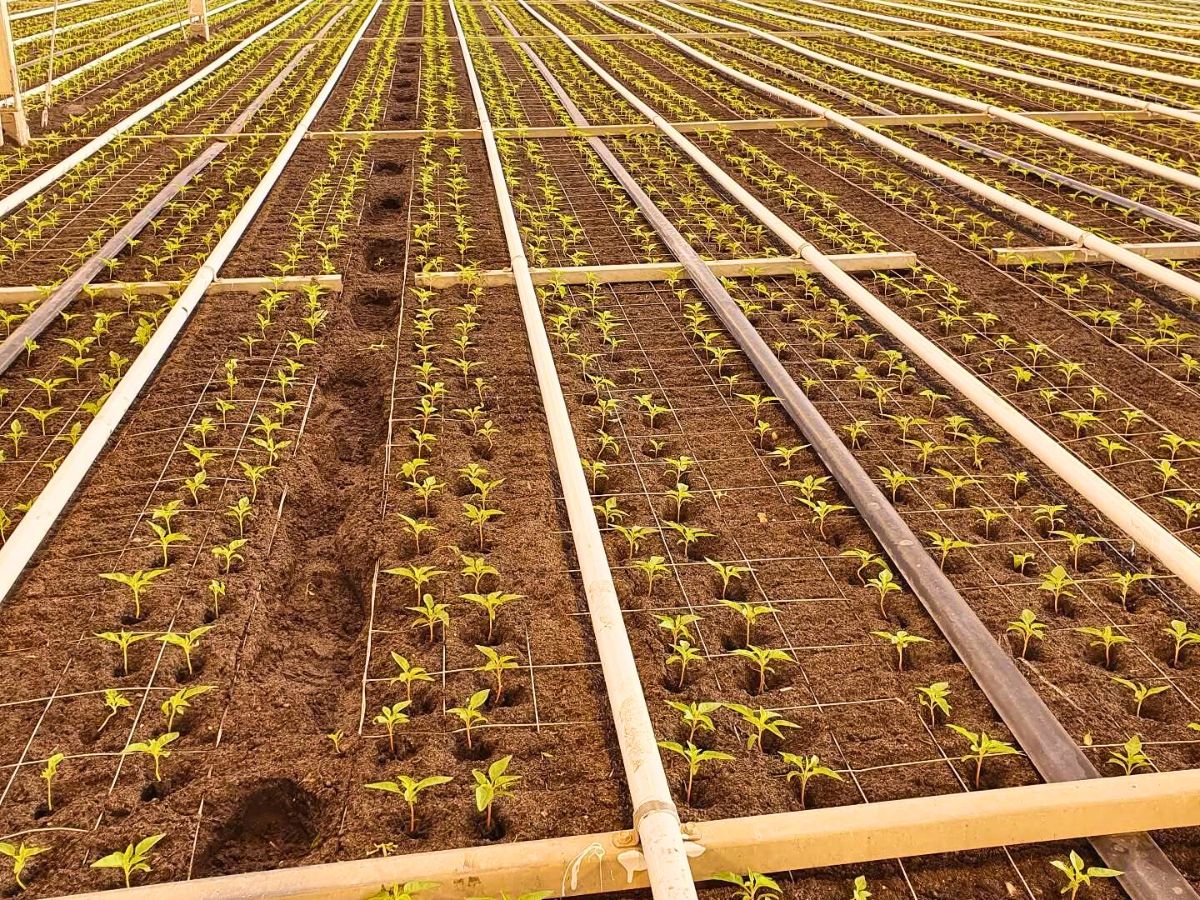
After sowing, cover the trays with a plastic dome or film to retain humidity and place them in a warm location — ideally around 70 to 75°F (21 to 24°C). A heat mat can be used to maintain consistent warmth if temperatures fluctuate. Celosia seeds typically germinate within 8 to 14 days.
Once the Celosia seedlings emerge, remove the plastic cover and ensure they receive plenty of light. A bright windowsill or grow light setup works well. Keep the soil evenly moist but never soggy, as excessive moisture can lead to root rot. When the seedlings develop their second set of true leaves, they can be transplanted into larger pots to allow further growth before being hardened off.
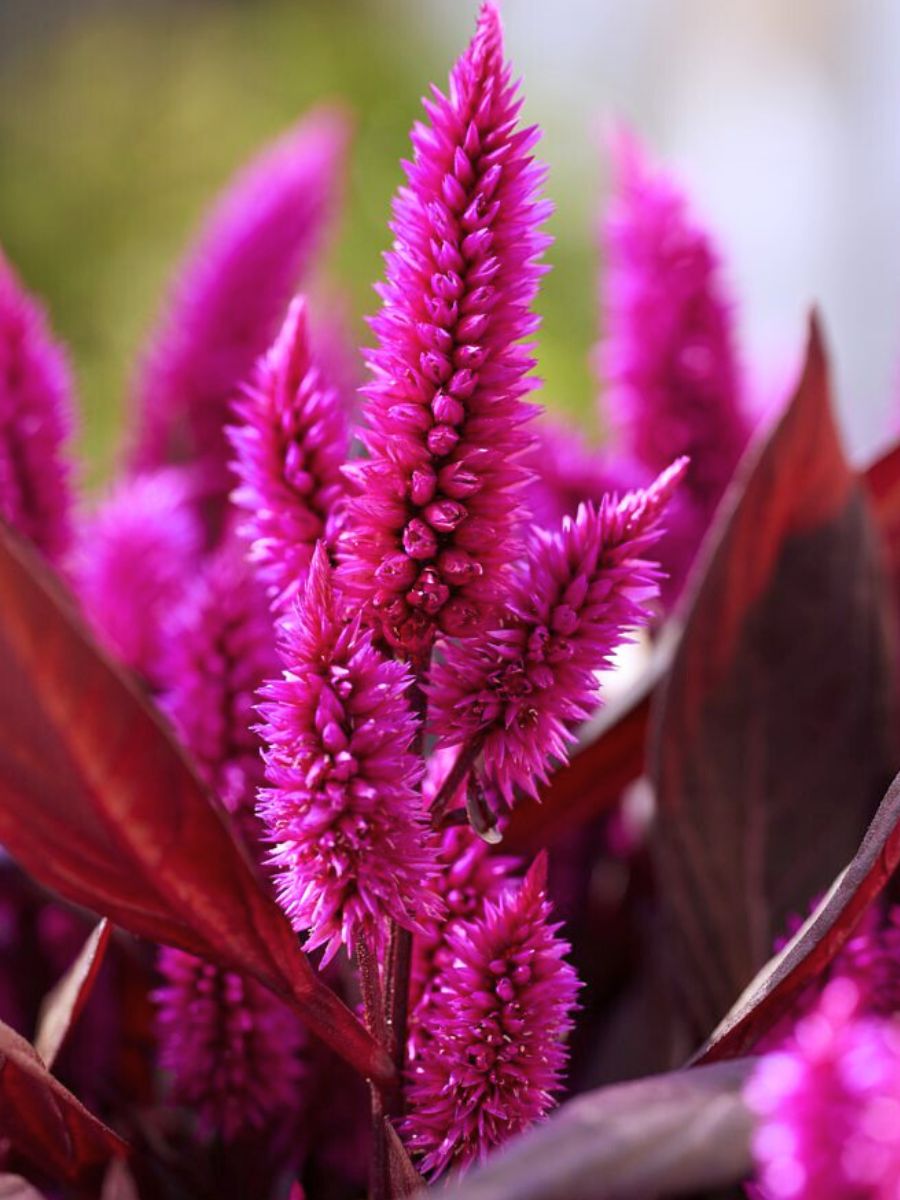
Hardening off is a crucial step before planting Celosia outdoors. Begin by placing the seedlings outside for a few hours each day in a sheltered spot, gradually increasing their exposure to sun and wind over a week. This process reduces transplant shock and helps the young plants adjust to the outdoor environment.
Planting Celosia in Garden Beds and Containers
Once the danger of the last spring frost has passed and soil temperatures have warmed to at least 13°C (55°F), Celosia seedlings can be transplanted outdoors. Whether you're adding them to open garden beds or brightening up patio containers, planting Celosia at the right time and with proper spacing ensures healthy growth and vibrant displays of flowers throughout the season.

Celosia thrives in full sun, requiring at least six to eight hours of direct sunlight daily. Choose a location with rich, well-draining soil, as soggy or heavy soils can quickly lead to root rot, one of the most common issues when growing Celosia. If you're dealing with heavy clay soil or drainage issues, consider building a raised garden bed to provide the ideal growing conditions for your celosia plants. If planting in containers, be sure to use pots with adequate drainage holes and fill them with a loose, organic potting mix that encourages airflow and moisture balance.
In the garden, space Celosia plants approximately 20-30 cm (8-12 inches) apart, depending on the variety. Giving them room not only allows for better air circulation — helping to prevent fungal diseases — but also encourages fuller branching and a stronger root system. Compact cultivars may be spaced more closely, while larger varieties, such as tall plumed Celosia or large-headed cockscomb, benefit from wider gaps.
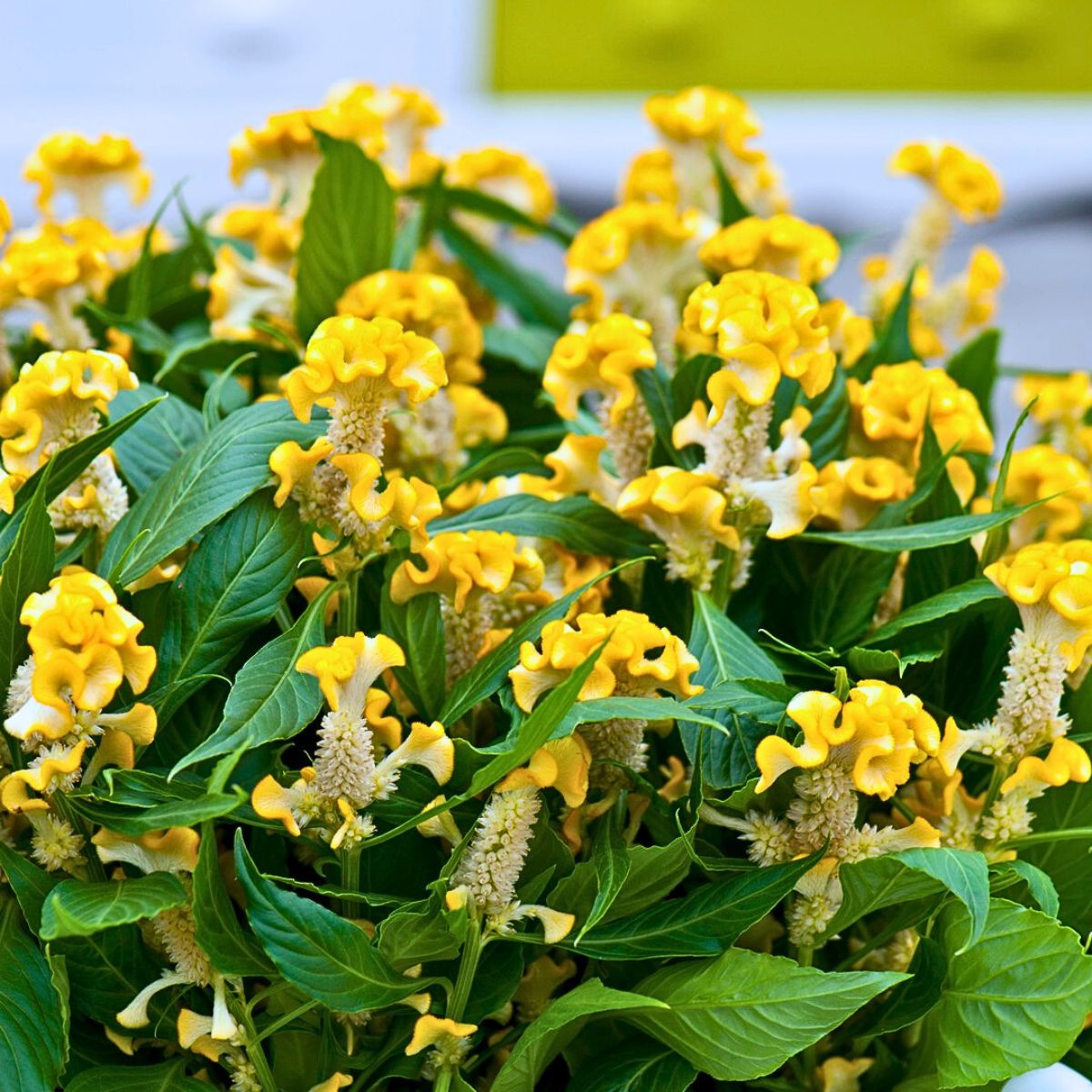
When planting, incorporate a general-purpose fertilizer into the soil to support early establishment. Celosia responds well to nutrient-rich conditions, especially when phosphorus is present to stimulate root and flower development. For garden beds, mixing in compost or well-rotted organic matter can improve soil structure and moisture control — a key consideration for long-term success.
If you're growing taller cockscomb varieties, consider placing a slender stake or small cage at the time of planting. This early support helps the plants remain upright as their large flower heads mature and become heavier. In containers, opt for sturdy, broad-based pots that won’t tip over easily in wind or under the weight of the plant.
Care Tips for Growing Celosia Plants All Season Long
Once planted, Celosia plants require relatively minimal care, but attention to a few key elements will keep them thriving and flowering consistently throughout the season. Like many tender annuals, Celosia benefits from a stable routine — one that balances water, nutrients, and the right environmental conditions.
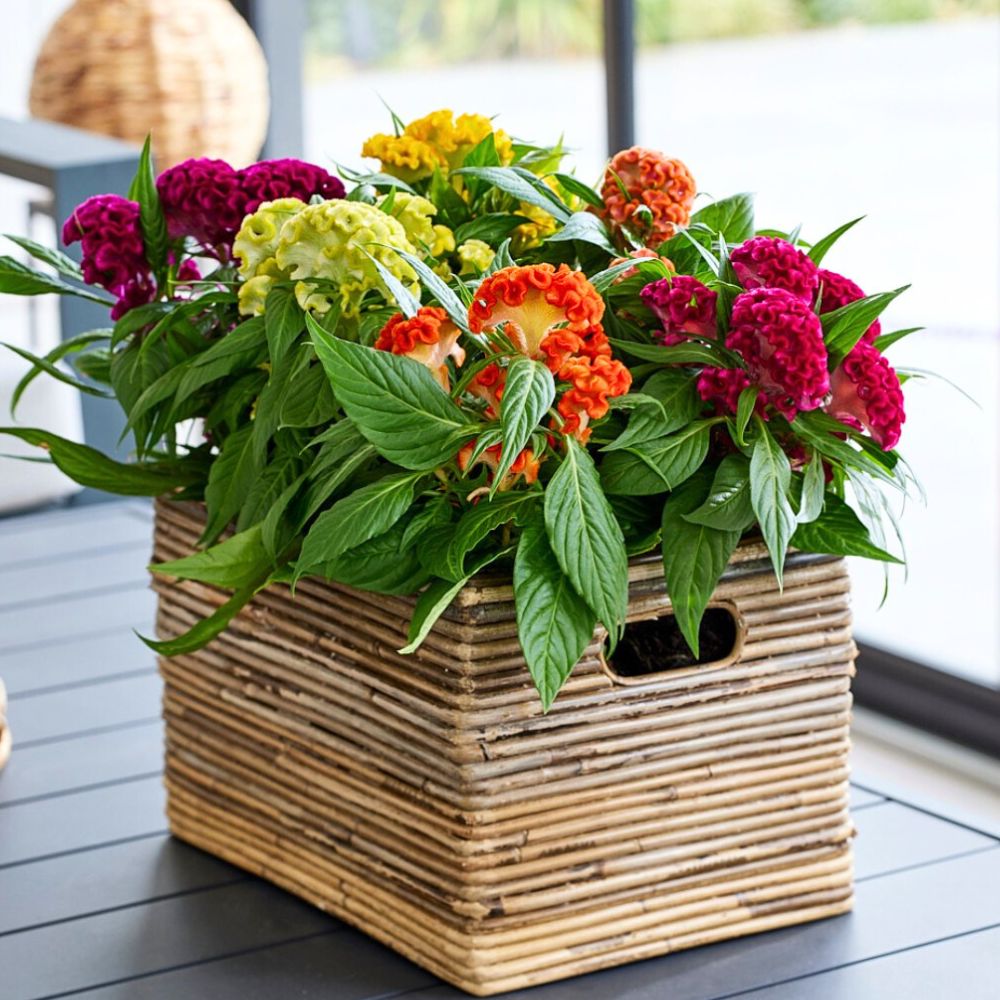
Watering is perhaps the most crucial aspect. Celosia prefers evenly moist soil but is highly sensitive to overwatering. The term "wet feet" is often used to describe what Celosia dislikes most: stagnant water around the roots. To avoid this, always check that the top inch of soil has dried before watering again. In hot summer climates, this may mean watering every two to three days, especially for potted plants. Containers can dry out faster, so regular checks are essential.
Fertilizing Celosia helps support both foliage and flower production. Use a balanced liquid fertilizer every two to three weeks, or apply a slow-release formula at the beginning of the season. For gardeners aiming for especially strong flower development, a phosphorus-rich fertilizer will encourage more prolific and vibrant flowering. However, moderation is key — overfertilizing can lead to excessive leafy growth at the expense of flowers.
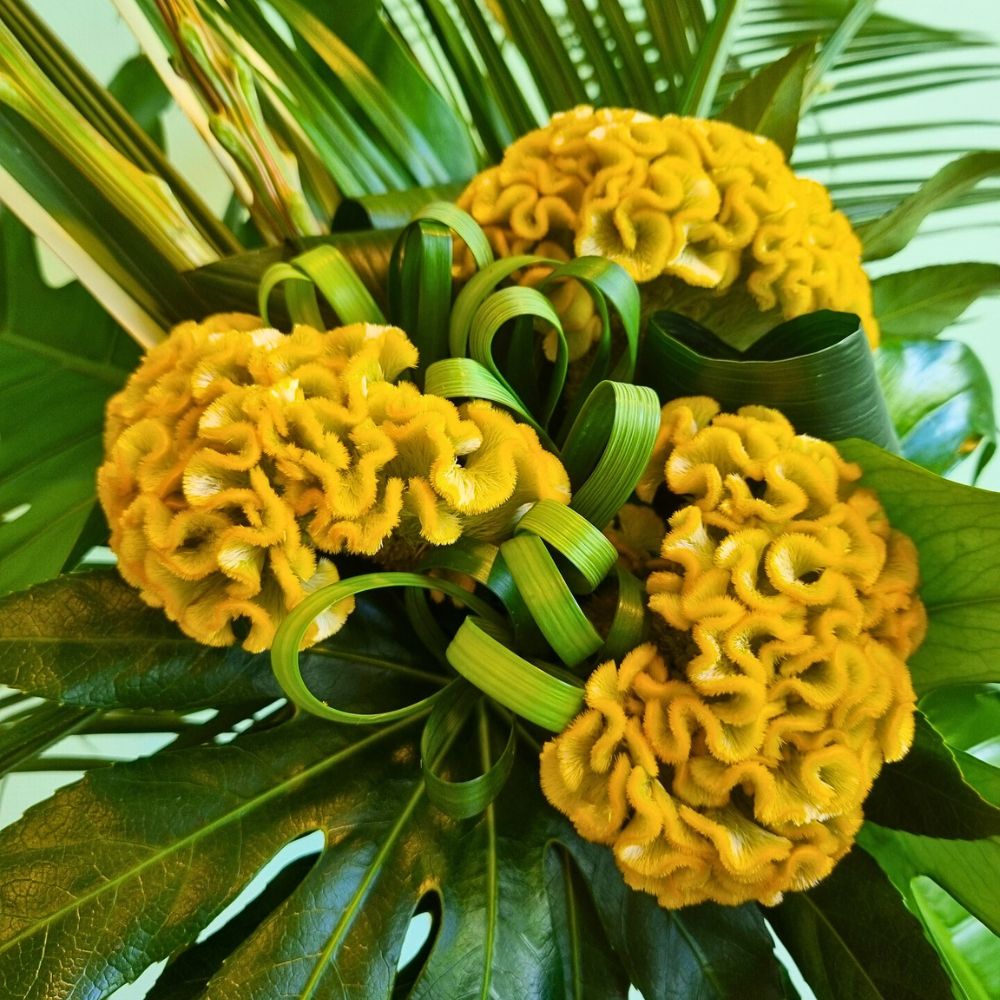
Celosia flower responds well to pinching and light pruning, especially early in the season. Pinching back the central stem when the plant is about six inches tall encourages branching and results in a bushier, more robust plant. As the season progresses, remove spent flower heads regularly to extend flowering and maintain a tidy appearance. While deadheading is not strictly necessary, it can improve overall visual impact and prevent self-seeding, which some varieties may do.
Maintaining good air circulation around the plants — especially when grown in groups — helps prevent fungal issues like mildew or leaf spot. Avoid watering the leaves directly and focus on directing water to the base of the plant. If planting Celosia in humid or rainy climates, spacing becomes even more important to reduce moisture build-up on foliage.
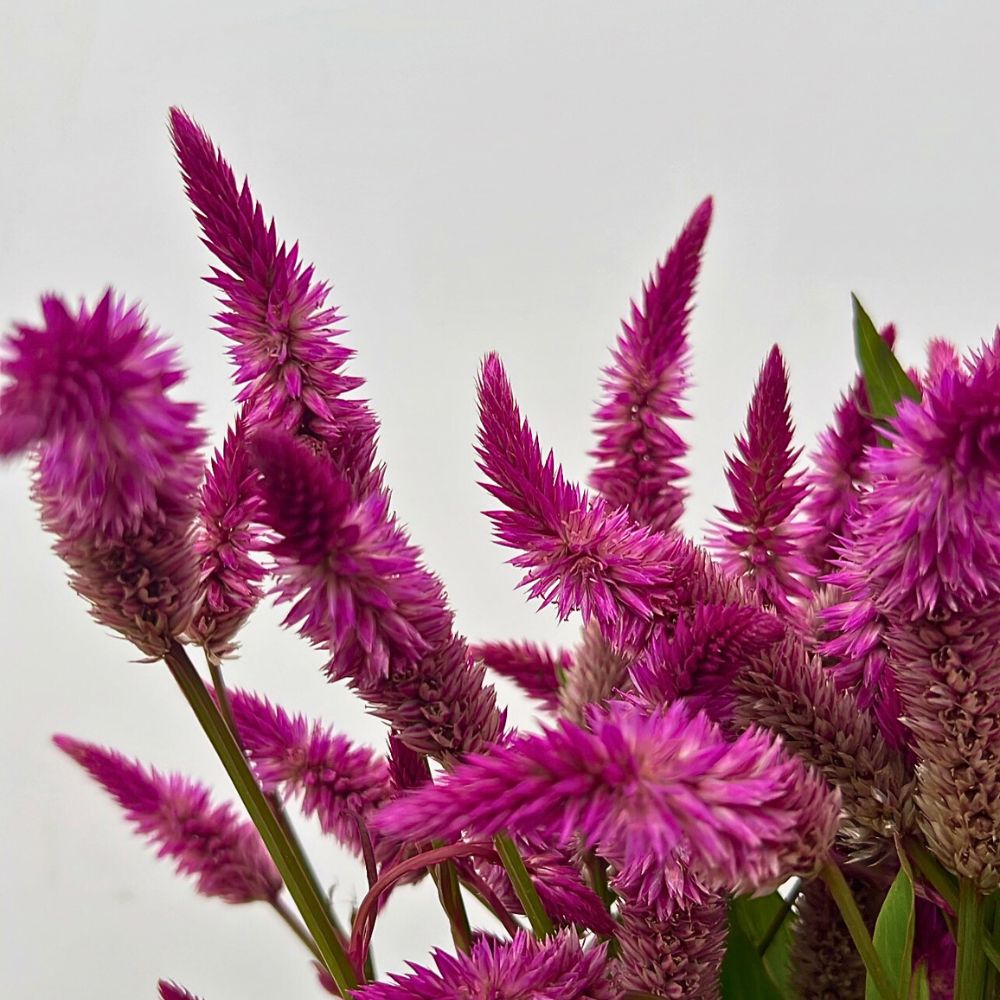
Finally, it’s worth watching out for stress indicators such as drooping, pale leaves, or stunted growth. These can be early signs of drainage issues, nutrient imbalances, or pests. Addressing problems early in the season ensures the plant stays productive and vibrant into autumn.
Preventing Root Rot and Common Celosia Issues
Though relatively low-maintenance, Celosia plants can be prone to a few common problems, the most serious of which is root rot. This condition usually results from excess moisture in the soil and poor drainage, especially in heavy or compacted soils. The first sign is often wilting, even when the soil appears wet. Yellowing leaves, stunted growth, or a foul odor from the base of the plant are also red flags.
To prevent root rot, always plant Celosia in well-draining soil and avoid overwatering. Containers should have adequate drainage holes, and garden beds should be amended with compost or sand to improve structure. Let the top inch of soil dry out before watering again, and avoid watering late in the day or from overhead, especially in humid climates.
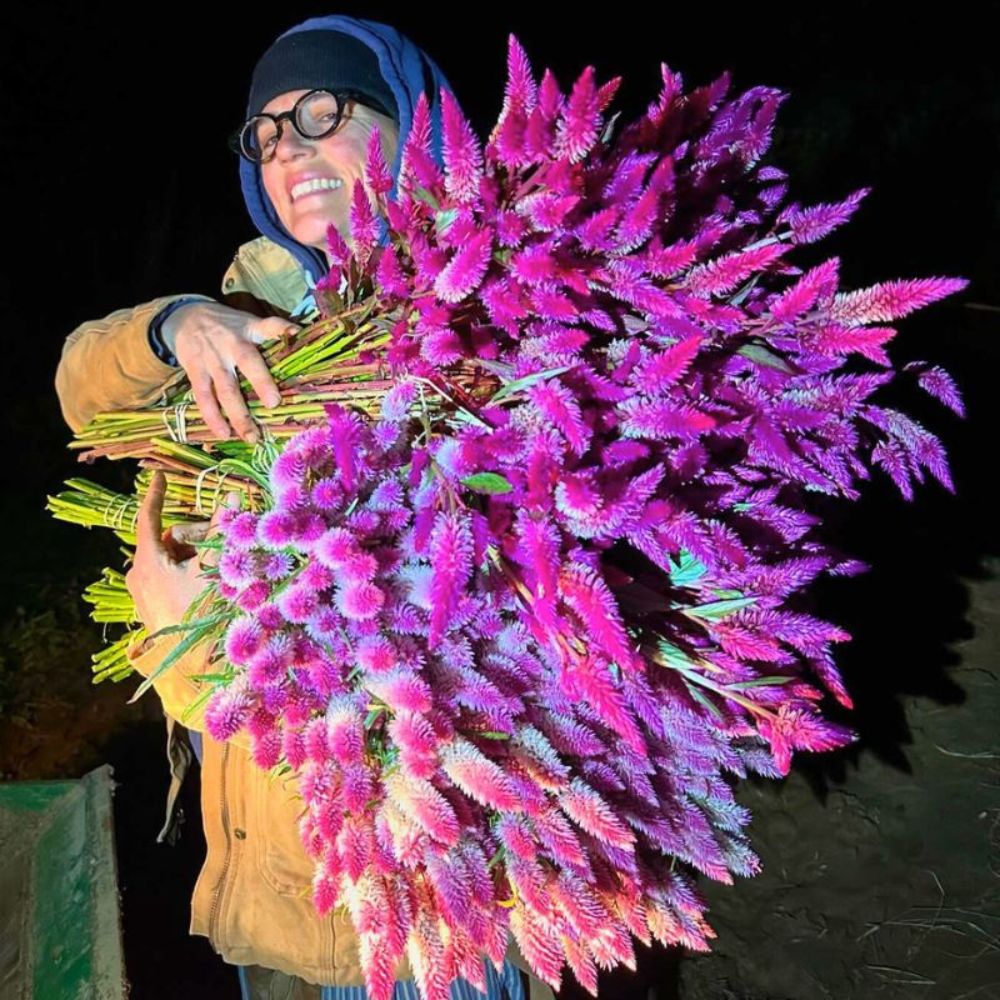
Celosia can also suffer from leaf spot, powdery mildew, or minor insect pests like aphids and whiteflies. Promote air circulation by spacing plants properly and inspecting them regularly. If pests appear, use a gentle insecticidal soap or rinse them off with water. Avoid harsh chemicals that may harm pollinators or beneficial insects.
Keeping the plant healthy from the start — with the right soil, sun exposure, and watering schedule — is the best defense. With minimal intervention and a bit of observation, Celosia typically grows free of serious trouble.
Choosing the Right Companion Plants for Celosia
Pairing Celosia plants with the right companions can enhance both visual harmony and garden health. Since Celosia thrives in full sun and well-draining soil, ideal partners are those with similar growing needs and complementary colors or textures.
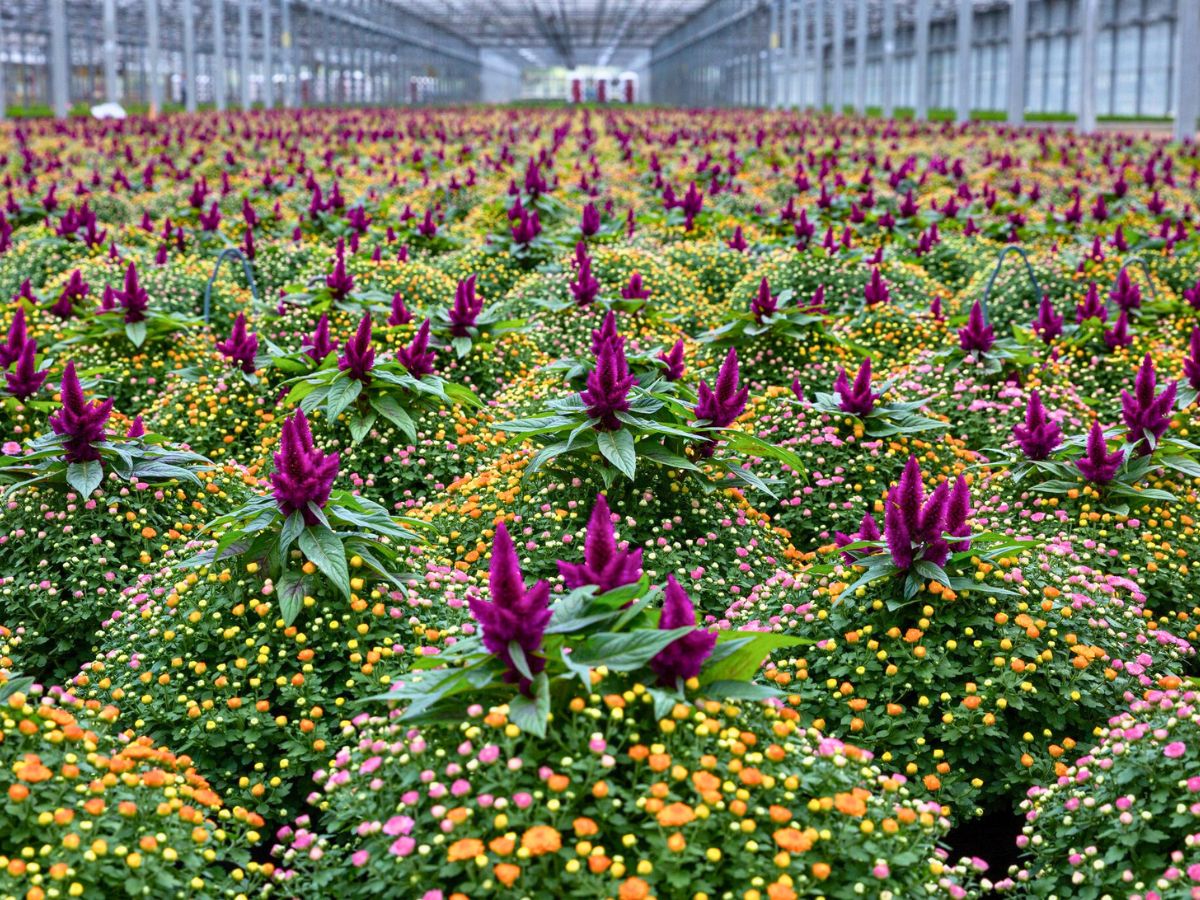
Flowers like Zinnias, Ageratum, and annual Vinca are excellent matches. Their drought tolerance, upright form, and extended flowering season make them natural allies. Mandevilla, with its climbing habit, can provide height contrast, while low-growing plants like dusty miller add silvery texture beneath Celosia’s bold forms.
Propagating Celosia
While Celosia is typically grown from seed, it can also be propagated from cuttings, especially in warm climates or controlled greenhouse settings. This method allows gardeners to duplicate favorite varieties and enjoy faster growth.
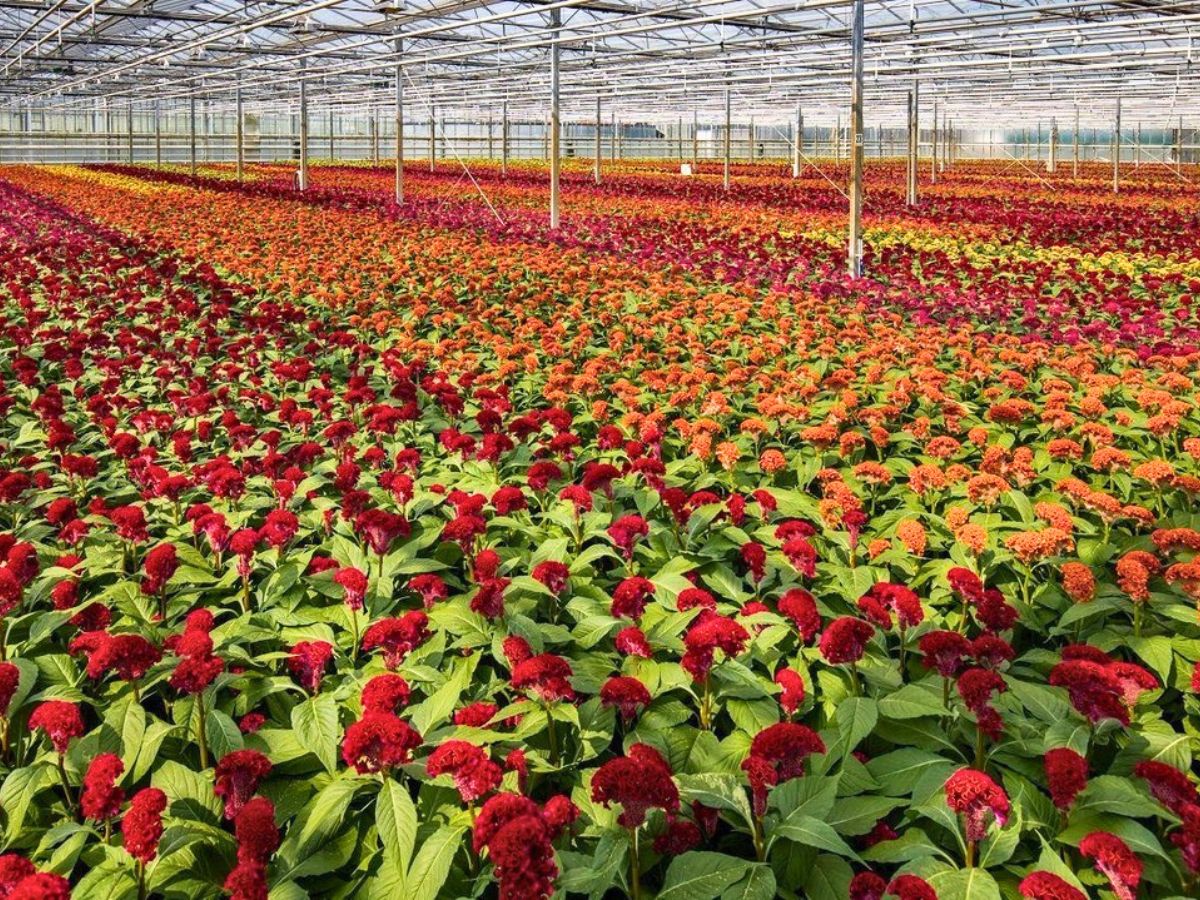
To propagate, snip a healthy stem about 10-15 cm (4–6 inches) long, removing the lower leaves. Place the cutting in water or a moist rooting medium — adding a rooting hormone can boost success. Keep it in a warm, bright spot but out of direct sun. In about 2–3 weeks, roots will begin to form.
Once well-rooted, transplant the cutting into a small pot with well-draining soil, and care for it as you would a young seedling. Propagation is a simple way to expand your Celosia collection — or share these vibrant plants with others.
Celosia as a Dried Flower
One of Celosia’s most appealing traits is its ability to retain shape and color when dried, making it a favorite among florists and home decorators alike. Whether it’s the flame-like plumes of plumed Celosia or the sculptural forms of cockscomb, the flower heads dry beautifully and last for months.
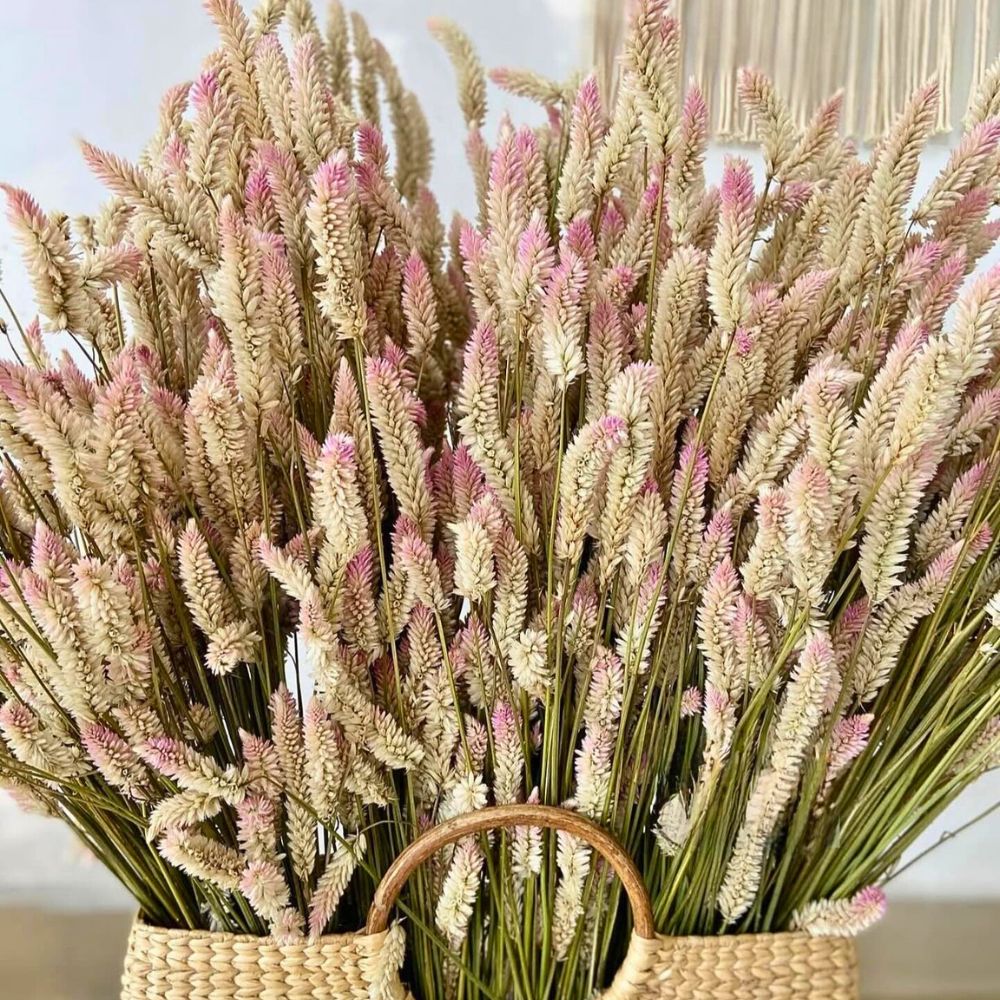
To dry Celosia, cut stems when the flowers are at their peak and hang them upside down in a dark, well-ventilated space. Avoid moisture and direct sunlight, which can cause fading or mildew. After a few weeks, the dried flowers can be used in wreaths, arrangements, or home décor projects.
Breeders of Celosia Flowers
The evolution of the Celosia flower from a garden oddity to a floral staple is thanks to breeders dedicated to refining its form, color, and performance.
In the Netherlands, Evanthia leads with bold, uniform varieties suited for both gardens and floral design. Floritec focuses on improving color, stem strength, and flower size, making their Celosia ideal for commercial production. Royal Van Zanten combines aesthetics with reliability, producing standout varieties for global markets. Stadsland, a newer name, brings fresh, artistic cultivars that appeal to florists looking for something unique and sustainable.
Together, these breeders shape the modern Celosia — versatile, dependable, and visually compelling across markets.
The Rise of Celosia in Cut Flower Markets
As demand grows for long-lasting, structural flowers with personality, Celosia has become a favorite among cut flower growers and floral designers worldwide. In the Netherlands, growers under the Decorum — such as Kwekerij Bosbloemen — are leading the way in Celosia production, cultivating top-performing varieties from breeders like Evanthia, Floritec, and Royal Van Zanten.
These growers focus on quality, stem strength, and vase life, producing Celosia that's consistent in shape and vibrant in color. Their flowers are harvested at just the right stage for transport, ensuring they arrive fresh and ready for high-end design use.
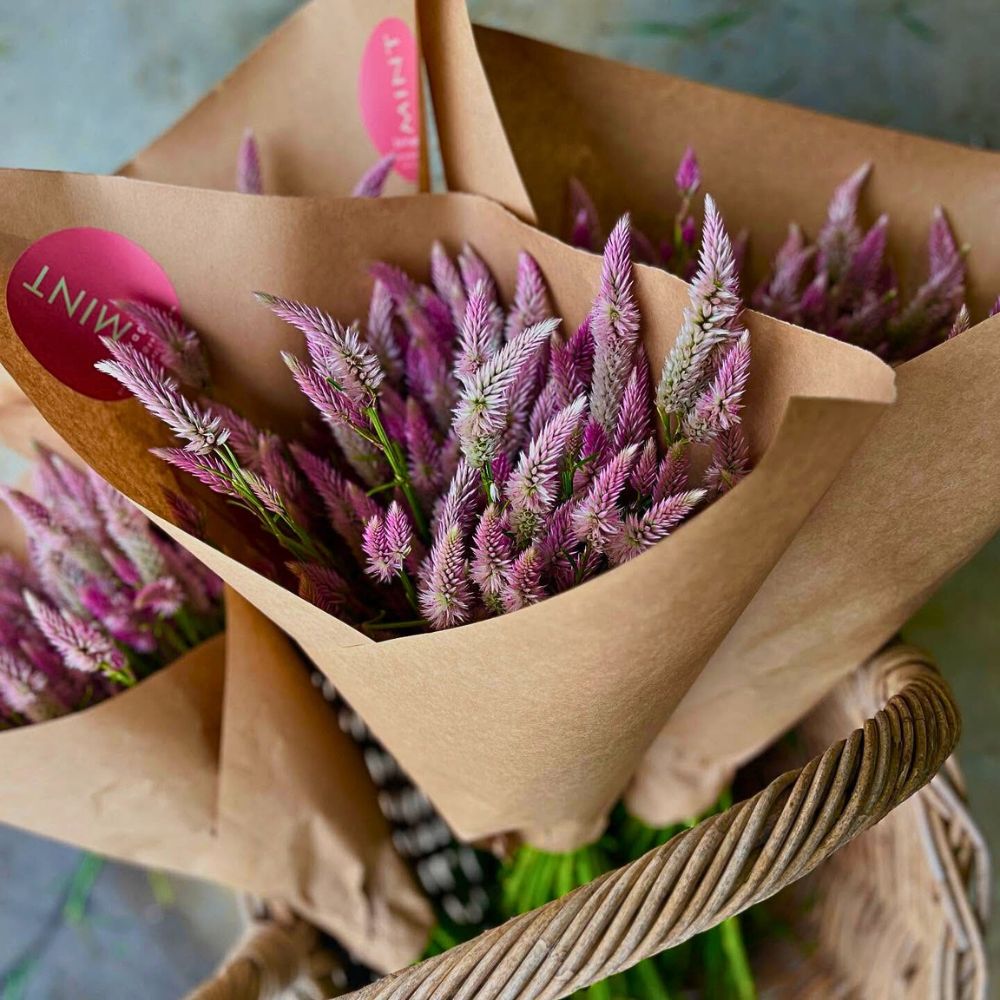
Florists favor Celosia for its sculptural form, rich texture, and ability to hold up well in arrangements, even without floral foam. From wedding installations to boutique bouquets, Celosia offers a bold, seasonal option that lasts.
Celosia Deserves a Place in Every Garden and Design
From its feathery plumes and coral-like crowns to its strength as a cut-and-dried flower, the Celosia plant offers both beauty and resilience. Easy to grow, rich in color, and backed by breeders and growers committed to excellence, Celosia has become more than a seasonal favorite — it’s a flower with staying power.
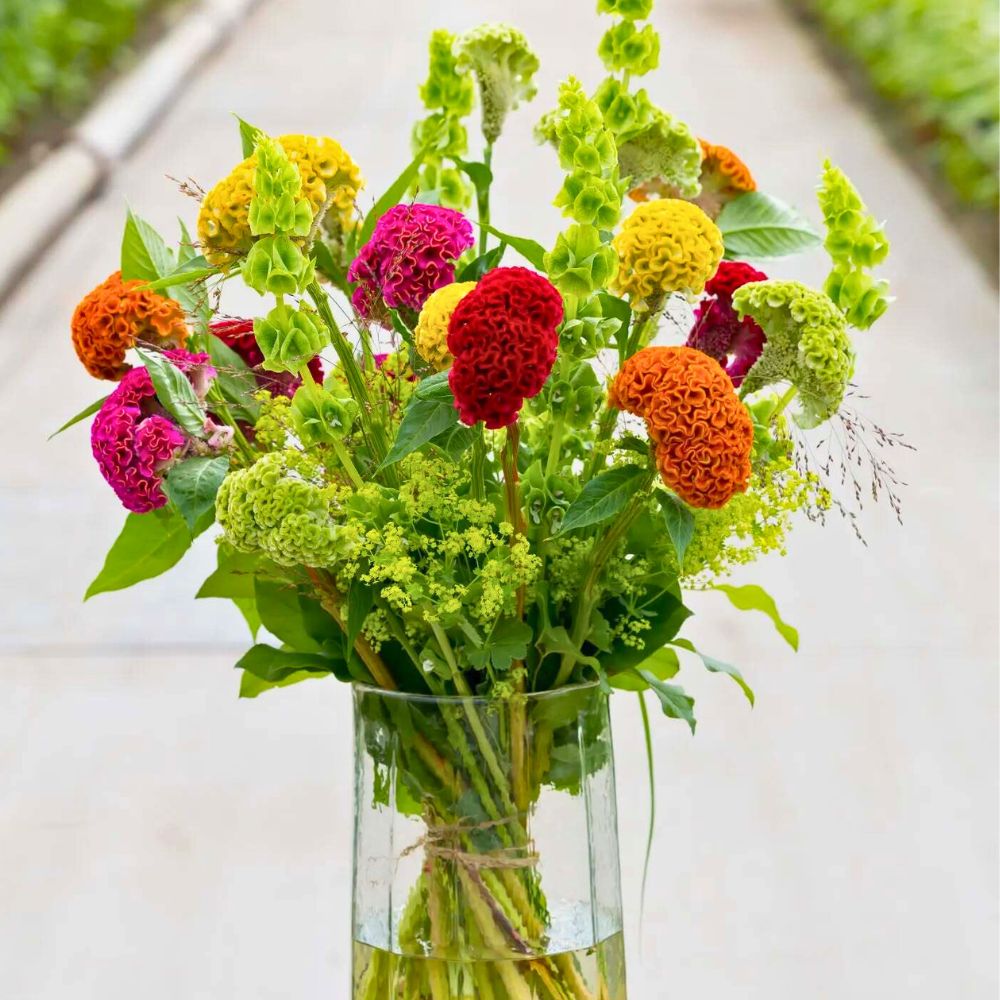
Whether you’re planting it in full sun for a bold garden display, starting seeds indoors, or selecting stems for design work, Celosia delivers style, structure, and vibrant charm from soil to centerpiece.
Header image by @Fleur by Lizz.

